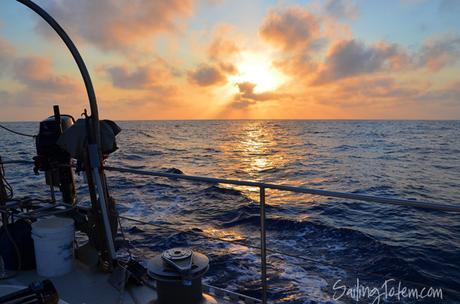
Sailing from Madagascar to South Africa is technically challenging. The Mozambique Channel separating them is famously dangerous, in particular for the effect of gales blowing up from the Southern Ocean against the south-setting Agulhas current. For a reference point that may translate better to sailors in North America, I’m told it’s comparable to experiencing a northerly gale in the Gulf Stream. There’s the very real possibility of some unpleasant weather, and big seas (20 meters!), and grief.
Happily, Totem is now snug in a berth at the Zululand Yacht Club in Richards Bay, South Africa, and this crossing is in the rear view mirror. Happily, most of our passage sunsets (and days) had the same mellow conditions as the photo above, taken on our second day. But here in Richards Bay, one of those southerly blows has just howled through, and left plenty of reminders of how seriously we need to take weather in this region.
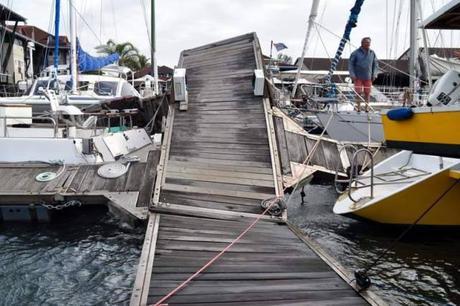
Phil & Norma Heaton’s view from the dock near Minnie B
It was enough to cause the port captain to close the harbor, not a light decision for world’s largest coal facility. Winds were clocked over 70 knots in the pilot station, boats are getting damaged, and the other marina in Richards Bay has sustained significant damage. (Thanks to Phil & Norma Heaton from the Ovni Minnie B for sharing the photo above- there’s more where that came from on their blog! That’s the view from where Totem WAS berthed at Tuzi Gazi, days before the gale…).
Weather and current factors
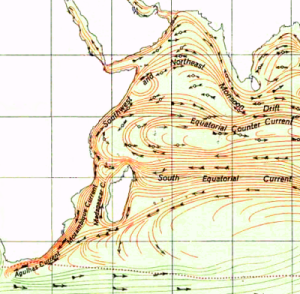
There are three basic weather factors to watch:
- What’s happening between Madagascar and SA
- Weather that comes from the south of Madagascar (dominated by southeast trades to the east)
- Systems from the Southern ocean, or off the southern African continent (e.g., the big stuff that’s most discussed)
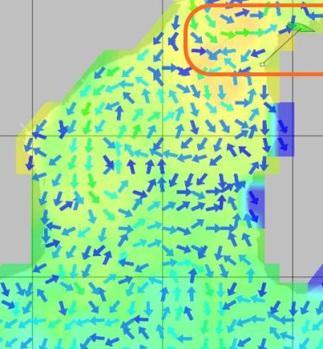
But think of it this way: there’s a whole ocean worth of current heading west, which is disrupted by Madagascar. Imagine drawing your hand through the water, and the way water swirls and mixes behind it. That’s oversimplified, maybe, but it’s what’s happening on the back side of Madagascar, but in a more intricate manner. Add in a strong southerly system, pushing up against the south flowing current and disrupting everything. These combined with southern stuff off South Africa cases a current picture that’s a crazy jumble of vectors – vectors that change ALL THE TIME. Much more complex.
Planning Totem’s passage
The wind dynamics weren’t hard to anticipate for this passage; it’s the current that represented a learning curve for us and others (prompting this post about ocean currents).
When getting ready for our own passage, there was the added complication of changing seasons. Understanding the impact on weather patterns provided a whole new appreciation for how tricky this passage is from a technical standpoint.
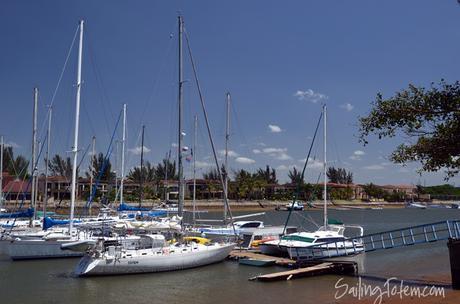
Totem tucked into her berth – Zululnd YC
Here’s where I’m glad to be married to a guy who has a pro racing background, as a navigator no less! Jamie’s focus for routing Totem was to find the most efficient (/safe/comfortable) path from A to B, balancing all the wind and current factors. And we were racing: not other boats, but racing conditions to make it into port. We have no interest in being spanked by the weather, as that’s bad for boats and bad for people.
Routing fundamentals this passage (Madagascar to South African arrival) have three parts:
- getting across the channel (whether you do it first, or second)
- getting south (whether you do it second, or first)
- the last few hundred miles
We did our southing along the coast of Madagascar, where the daily land/sea breeze and flat water has provided some of the best sailing conditions we’ve ever experienced. We hung a right near the bottom of the Madagascar to find a good angle on the breeze bending around the south end of the island to get across to South Africa. Ultimately, we had a really good crossing and arrived in just under seven days.
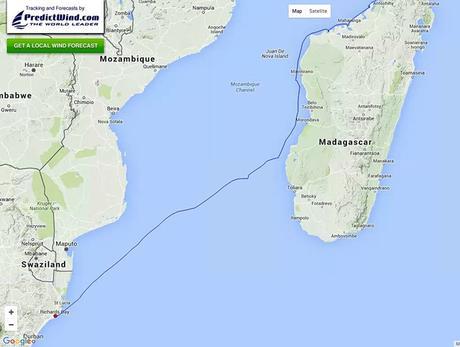
Jamie’s racing experience came into play repeatedly. We played wind shifts to keep up VMG. We altered course to avoid foul current. WE TACKED. We tacked three times, even. I don’t remember the last time we tacked once on a passage- it’s probably been years! There were multiple course changes of 90+ degrees – because they made sense. Definitely not the typical cruising passage.
But the forecast along the way changed constantly, and we had to adapt: we got updates for GRIBs, current, and routing twice a day on PredictWind. A few days in, a system started to appear that offered the possibility of a really bad scenario. We shortened the total distance by changing our anticipated landfall from Durban to Richards Bay, and continued to play for efficiency to get into port. It paid off when the system arrived hours earlier than the earliest time forecast; we were nipped, but it could have been much worse. Those six miles of wind-vs.-current made for an unpleasant slog, but that was only about an hour and a half out of a complicated, nearly weeklong passage.
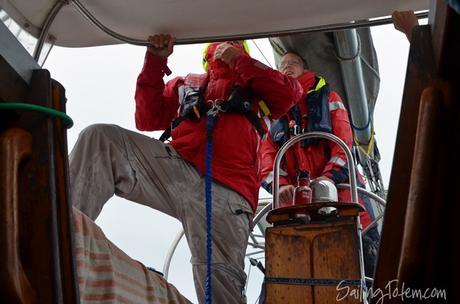
Our fantastic crew Ty, in the cockpit with Jamie on approach
The fundamental alternative route, to cross farther north and making our southing along Mozambique, appealed to us when we thought we’d be able to linger and explore there for a while. I’d love to have been able to walk around the old Portuguese fort and buildings on Ilha de Moçambique! But we ran out of time to include playing tourist in our plans, so wrote it off in favor of this strategy, which looked like a better option when weighing conditions with our priorities.
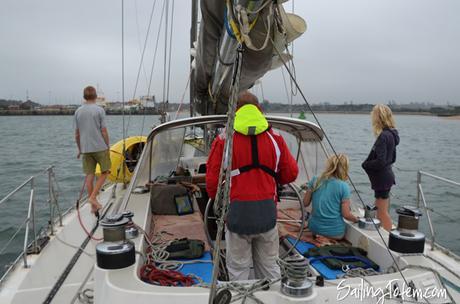
Landfall in Richards Bay
One of our favorite quotes from racing days is “I’d rather be lucky than smart.” For all the thought that went into planning for this passage, we were lucky too. Next we get to tackle it all over again, from here to Cape Town around the Cape of Good Hope.
This post is syndicated on Sailfeed: clicking through tosses change in our cruising kitty. Thank you!



COMMENTS ( 1 )
posted on 19 December at 09:49
Your feet swell during running, as much as a full shoe size. Whether it's in your neck, back, feet, or any part of the body, our bodies should not hurt, and we should not have to compensate for pain. A podiatrist may recommend you wear Plantar Fasciitis shoes in Dallas TX to relieve foot pain.